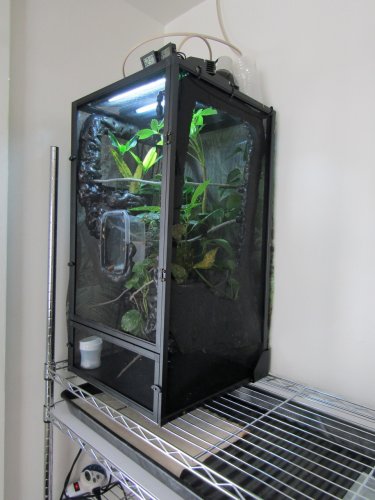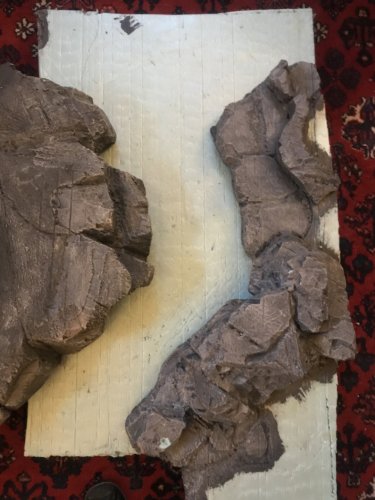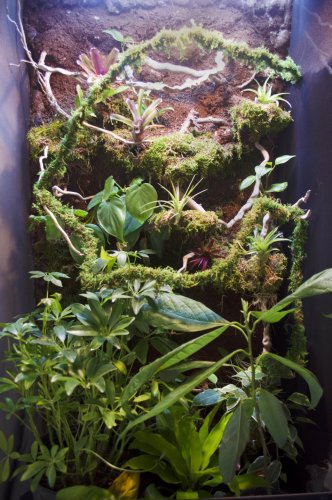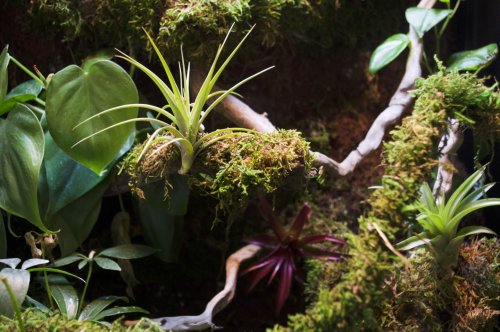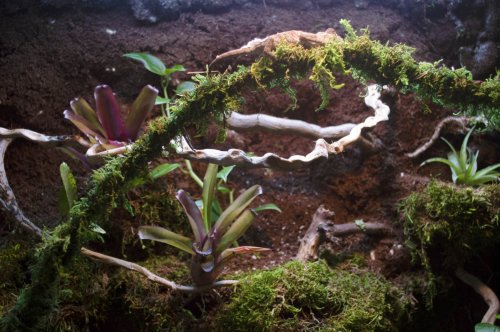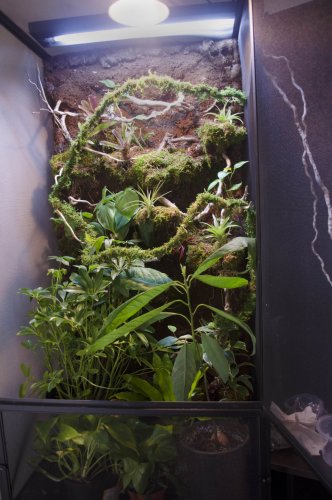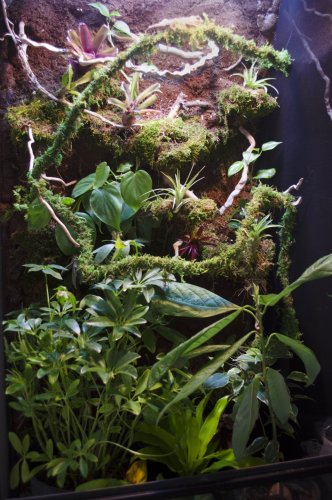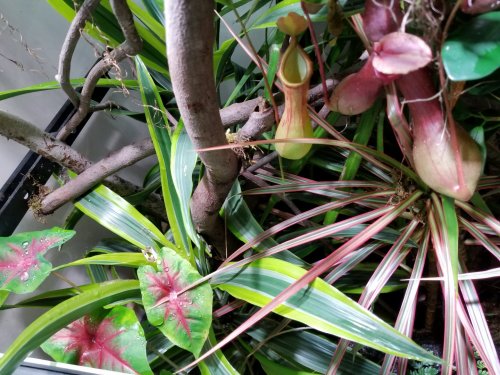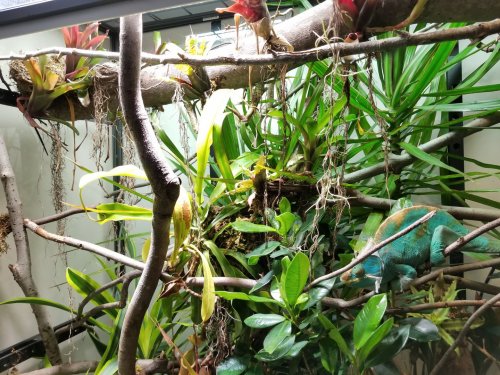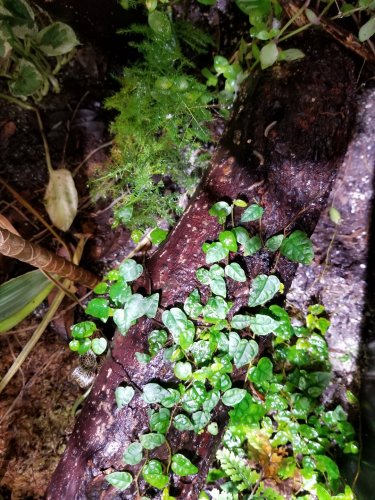Lunatuck
Established Member
I have to say I'm blown away by the live vivarium style enclosures some of you are posting. Even before I decided I wanted a chameleon, I always thought I'd want a bioactive terrarium. It also looks like I'll have my screen enclosure for some time before I acquire my Panther chameleon.
That said, I'm concerned about some of the negatives of a bioactive floor in my first chameleon setup and I'm a firm believer in the KISS principal. (Keep It Simple Stupid).
So I'm asking myself why I would want a bioactive setup. My primary reason is the beautiful look of a lush rainforest looking setup, but I also feel like it will increase the humidity in the cage. I live in the northeast, and I can see humidity being my primary struggle.
So my thought is to do a custom planted wall, but not a planted bottom. I'd plan on using spray foam, cork bark and some driftwood to create a natural looking wall with pockets to hold planters or planted plants. I'd hope this would help maintain higher humidity while not misting. I suspect that better humidity retention throughout would always be better. I also feel like the smaller plants (with leaves closer to the base) would be better at holding humidity then something like a ficus. It should also give me more anchor points for vines and other climbing fodder.
So my main question is does this sound like a good plan? If so, my second question is "Do I create (spray foam)the wall directly onto the back screen panel?" I'm using an Exo Terra 24"wx18"dx36" screen terrarium. IF it was an aquarium, I'd spray directly, but I'm not sure that the screen can handle the weight. Particularly with plants on it. Is there an easy solution to this?
Any thoughts or help is welcome. Thanks!
That said, I'm concerned about some of the negatives of a bioactive floor in my first chameleon setup and I'm a firm believer in the KISS principal. (Keep It Simple Stupid).
So I'm asking myself why I would want a bioactive setup. My primary reason is the beautiful look of a lush rainforest looking setup, but I also feel like it will increase the humidity in the cage. I live in the northeast, and I can see humidity being my primary struggle.
So my thought is to do a custom planted wall, but not a planted bottom. I'd plan on using spray foam, cork bark and some driftwood to create a natural looking wall with pockets to hold planters or planted plants. I'd hope this would help maintain higher humidity while not misting. I suspect that better humidity retention throughout would always be better. I also feel like the smaller plants (with leaves closer to the base) would be better at holding humidity then something like a ficus. It should also give me more anchor points for vines and other climbing fodder.
So my main question is does this sound like a good plan? If so, my second question is "Do I create (spray foam)the wall directly onto the back screen panel?" I'm using an Exo Terra 24"wx18"dx36" screen terrarium. IF it was an aquarium, I'd spray directly, but I'm not sure that the screen can handle the weight. Particularly with plants on it. Is there an easy solution to this?
Any thoughts or help is welcome. Thanks!







